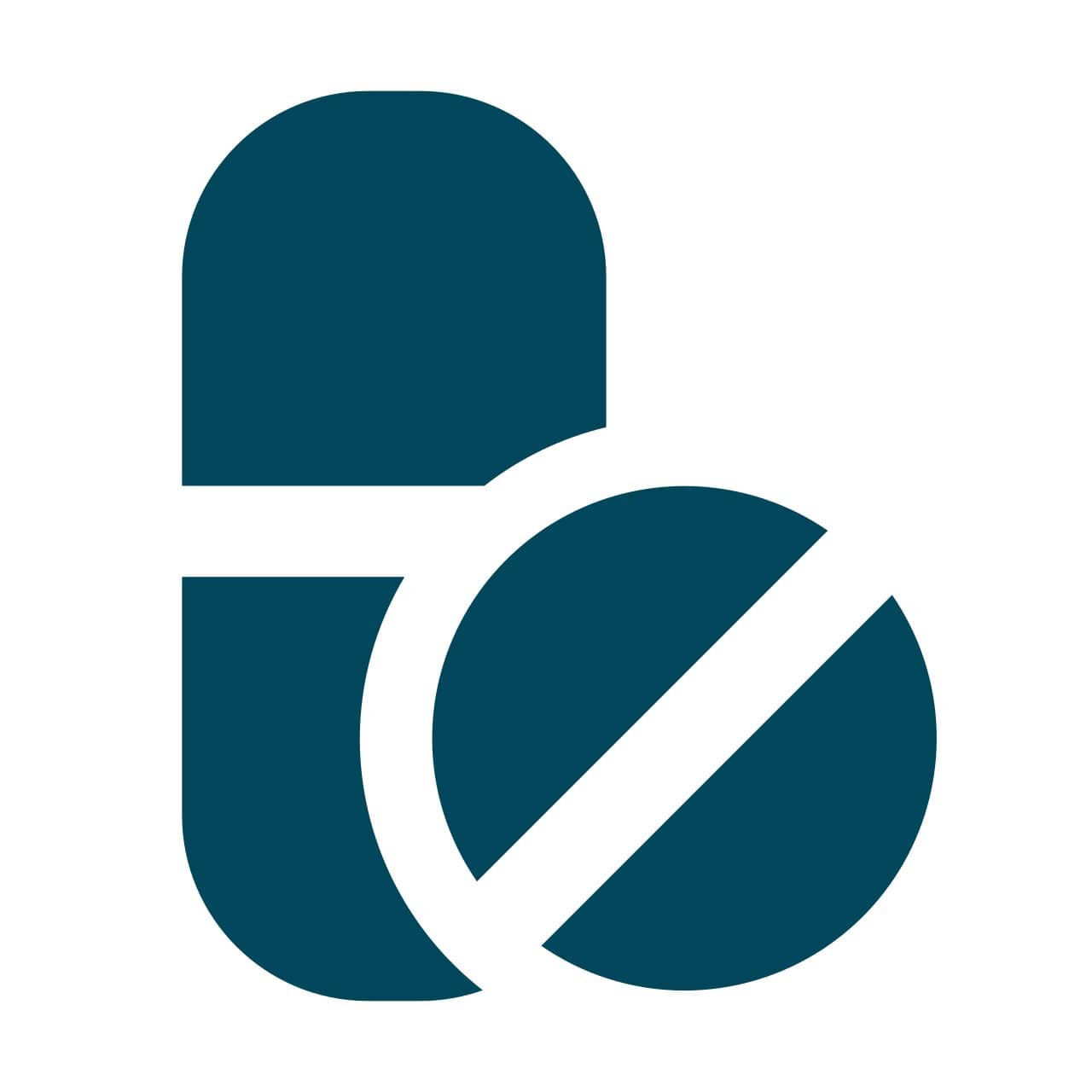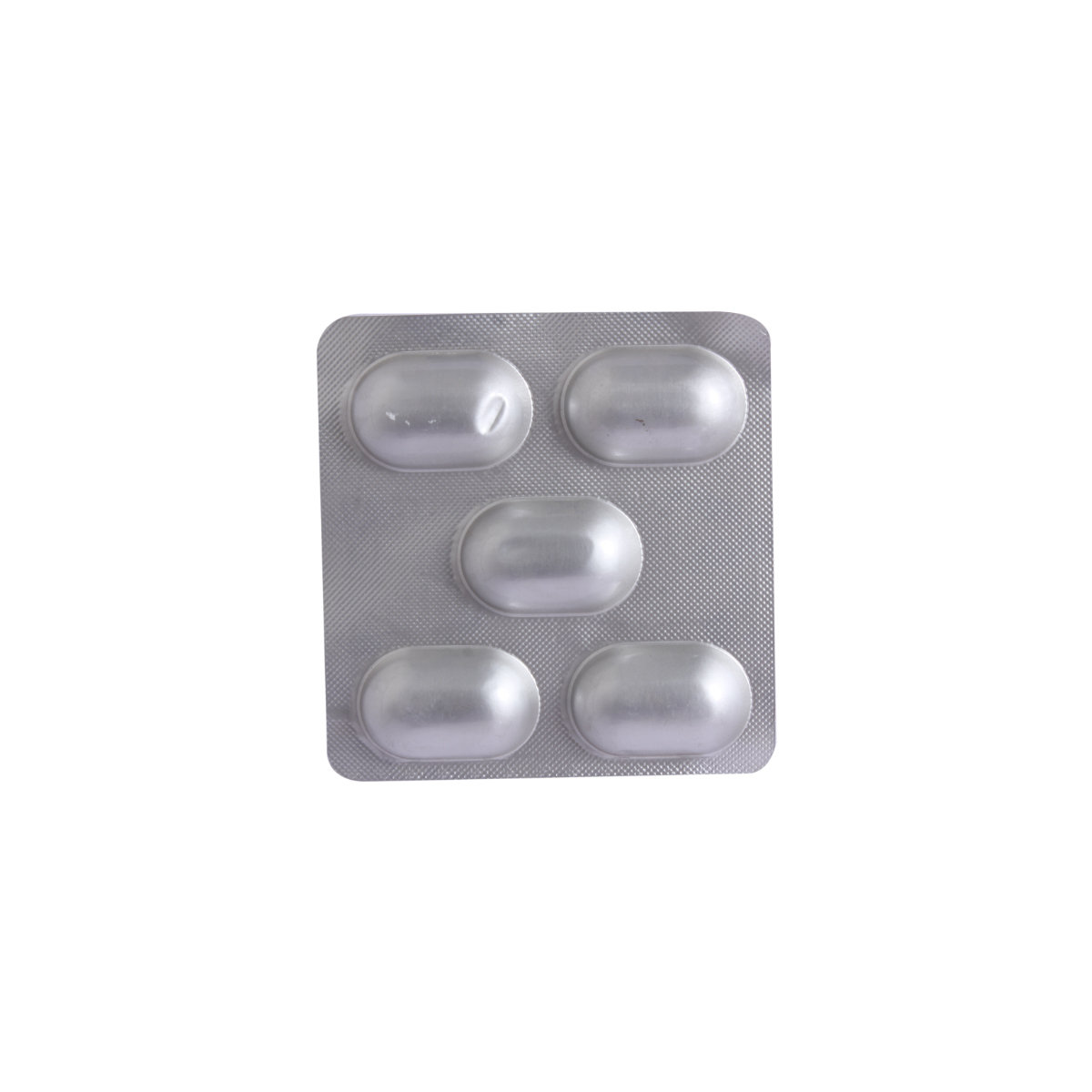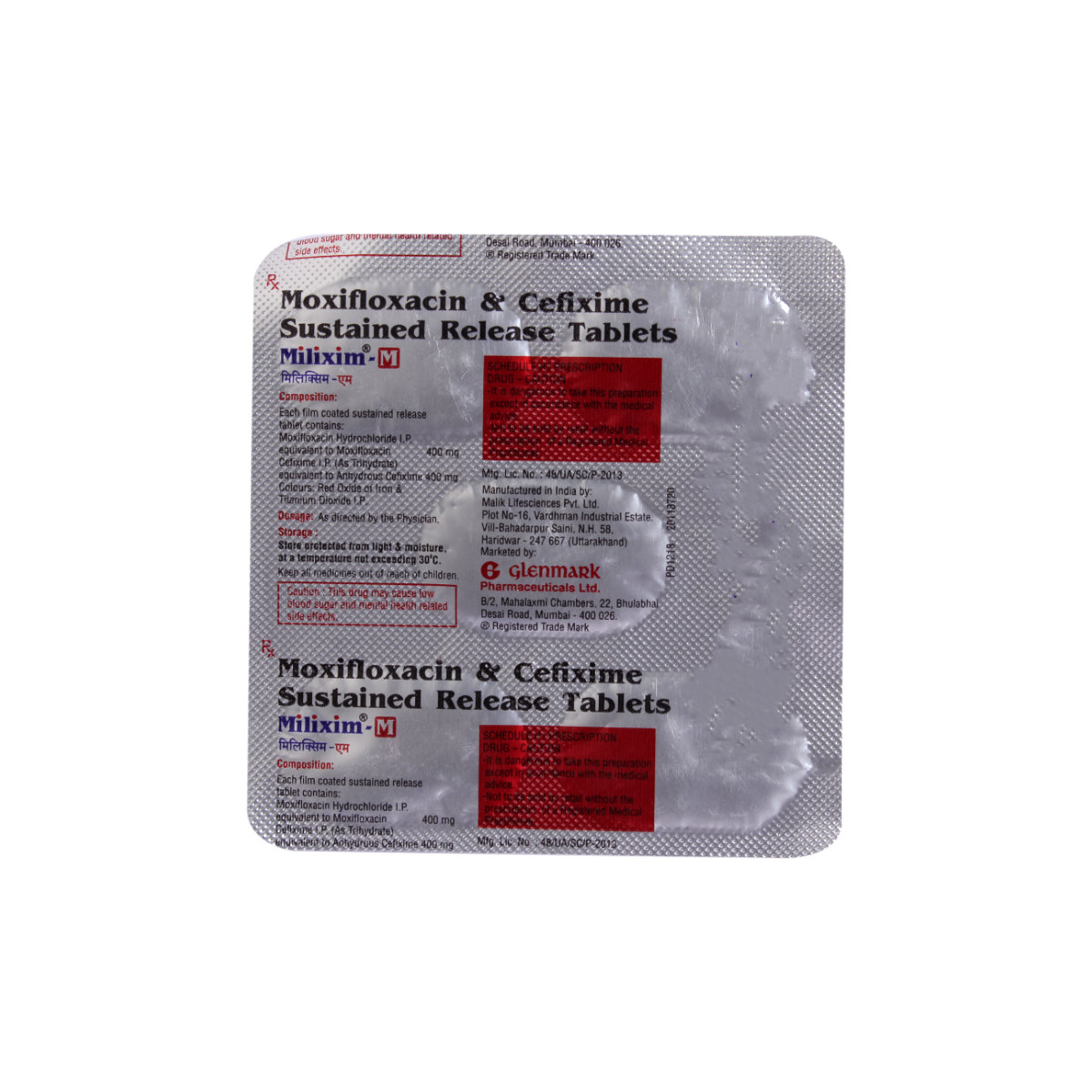Milixim-M Tablet 5's
MRP ₹306.5
(Inclusive of all Taxes)
₹46.0 Cashback (15%)
Provide Delivery Location
Online payment accepted
 Prescription drug
Prescription drugWhats That
Composition :
Manufacturer/Marketer :
Consume Type :
Expires on or after :
Return Policy :
NPPA :
About Milixim-M Tablet
Milixim-M Tablet belongs to the class of medications called ‘antibacterial’ primarily taken to treat various bacterial infections of the ears, lungs and urinary tract. Infectious or harmful bacteria can make you sick and reproduce quickly in your body. These harmful bacteria produce chemicals known as toxins, which can damage tissue and make you sick.
Milixim-M Tablet is a combination of two medicines: Cefixime and Moxifloxacin. Cefixime is a cephalosporin antibiotic that prevents the formation of the bacterial protective covering, which is essential for the survival of bacteria in the human body. Moxifloxacin is a fluoroquinolone antibiotic that stops bacteria from making a copy of their genetic material (DNA), thereby killing and stopping bacterial infection growth. Thus together, Milixim-M Tablet treats the infection effectively.
Milixim-M Tablet should be taken as advised by your doctor. Take this Milixim-M Tablet in the dose and duration as advised by your doctor. Swallow it as a whole with a glass of water. Do not chew, crush or break it. Milixim-M Tablet may be taken with or without food, but it is better to take it at a fixed time. Milixim-M Tablet may cause common side effects like headache, dizziness, stomach pain, nausea, flatulence, and diarrhoea. These side effects need not require any medical attention. If it persists, please consult your doctor immediately.
Do not use Milixim-M Tablet If you are allergic to it. Inform your doctor if you are using other prescription and non-prescription medicines. Before taking Milixim-M Tablet, inform your doctor if you are pregnant/planning to get pregnant/breastfeeding. Milixim-M Tablet should be used with caution if you have diabetes, low potassium levels, epilepsy or hypoglycaemia (low blood sugar), heart diseases, kidney diseases and liver diseases. Milixim-M Tablet should be used with caution in clostridium difficile infection (inflammation of the colon caused by the bacteria clostridium difficile) and pseudomembranous colitis (swelling or inflammation of the large intestine).
Uses of Milixim-M Tablet
Directions for Use
Key Benefits
Milixim-M Tablet is a combination of two medicines: Cefixime and Moxifloxacin belong to the class of medications called ‘antibacterials’. Cefixime is a cephalosporin antibiotic that prevents the formation of the bacterial protective covering, which is essential for the survival of bacteria in the human body. Moxifloxacin is a fluoroquinolone antibiotic that stops bacteria from making a copy of their genetic material (DNA), thereby killing and stopping bacterial infection growth. Thus, Milixim-M Tablet treats your infection effectively.
Storage
- Inform your doctor about the nausea and discuss possible alternatives to the medication or adjustments to the dosage.
- Divide your daily food intake into smaller, more frequent meals to reduce nausea.
- Opt for bland, easily digestible foods like crackers, toast, plain rice, bananas, and applesauce.
- Avoid certain foods that can trigger nausea, such as fatty, greasy, spicy, and smelly foods.
- Drink plenty of fluids, such as water, clear broth, or electrolyte-rich beverages like coconut water or sports drinks.
- Use ginger (tea, ale, or candies) to help relieve nausea.
- Get adequate rest and also avoid strenuous activities that can worsen nausea.
- Talk to your doctor about taking anti-nausea medication if your nausea is severe.
- Record when your nausea occurs, what triggers it, and what provides relief to help you identify patterns and manage your symptoms more effectively.
- Inform Your Doctor: Notify your doctor immediately about your diarrhoea symptoms. This allows them to adjust your medication or provide guidance on managing side effects.
- Stay Hydrated: Drink plenty of fluids to replace lost water and electrolytes. Choose water, clear broth, and electrolyte-rich drinks. Avoid carbonated or caffeinated beverages to effectively rehydrate your body.
- Follow a Bland Diet: Eat easy-to-digest foods to help firm up your stool and settle your stomach. Try incorporating bananas, rice, applesauce, toast, plain crackers, and boiled vegetables into your diet.
- Avoid Trigger Foods: Steer clear of foods that can worsen diarrhoea, such as spicy, fatty, or greasy foods, high-fibre foods, and dairy products (especially if you're lactose intolerant).
- Practice Good Hygiene: Maintain good hygiene to prevent the spread of infection. To stay healthy, wash your hands frequently, clean and disinfect surfaces regularly, and avoid exchanging personal belongings with others.
- Take Anti-Diarrheal Medications: If your doctor advises, anti-diarrheal medications such as loperamide might help manage diarrhoea symptoms. Always follow your doctor's directions.
- Keep track of your diarrhoea symptoms. If they don't get better or worse or are accompanied by severe stomach pain, blood, or dehydration signs (like extreme thirst or dark urine), seek medical help.
- Hydrate your body: Drink enough water to prevent dehydration and headaches.
- Calm Your Mind: Deep breathing and meditation can help you relax and relieve stress.
- Rest and Recharge: Sleep for 7-8 hours to reduce headache triggers.
- Take rest: lie down in a quiet, dark environment.
- Cold or warm compresses can help reduce tension.
- Stay Upright: Maintain good posture to keep symptoms from getting worse.
- To treat headaches naturally, try acupuncture or massage therapy.
- Over-the-counter pain relievers include acetaminophen and ibuprofen.
- Prescription Assistance: Speak with your doctor about more substantial drug alternatives.
- Severe Headaches: Seek emergency medical assistance for sudden, severe headaches.
- Frequent Headaches: If you get reoccurring headaches, consult your doctor.
- Headaches with Symptoms: Seek medical attention if your headaches include fever, disorientation, or weakness.
- Include lean proteins like skinless poultry and fish.
- Choose whole grains and low-fat dairy products.
- Limit intake of fat and oil.
- Stay hydrated by drinking plenty of water.
- Restrict heavy sugar intake.
- Avoid red meat, processed foods, and refined sugar.
- Eat more fruits and vegetables.
- Stay hydrated by drinking plenty of water.
- Talk to your doctor about oral potassium supplements.
- Eat potassium rich foods such as bananas, avocados, oranges, dark leafy greens, beans and peas, fish, spinach, milk and tomatoes.
- Prepare for a restful night's sleep: Develop a calming pre-sleep routine, like reading or meditation, to help your body relax and prepare for sleep.
- Create a sleep-conducive Environment: Make bedroom a sleep haven by ensuring it is quiet, dark and calm.
- Follow a Sleep Schedule: Go to bed and get up at the same time every day to help regulate your body's internal clock and increase sleep quality.
- Try relaxing techniques like deep breathing, mindfulness meditation and any others.
- Limit stimulating activities before bedtime: Avoid stimulating activities before bedtime to improve sleep quality.
- Monitor Progress: Keep track of your sleep patterns to identify areas for improvement.
- Consult a doctor if needed: If these steps don't improve your sleep, consult a doctor for further guidance and therapy.
Drug Warnings
Do not use Milixim-M Tablet If you are allergic to it. Inform your doctor if you are using other prescription and non-prescription medicines. Before taking Milixim-M Tablet, inform your doctor if you are pregnant/planning to get pregnant/breastfeeding. Milixim-M Tablet should be used with caution if you have diabetes, low potassium levels, epilepsy or hypoglycaemia (low blood sugar), heart diseases, kidney diseases and liver diseases. Milixim-M Tablet should be used with caution in clostridium difficile infection (inflammation of the colon caused by the bacteria clostridium difficile) and pseudomembranous colitis (swelling or inflammation of the large intestine). Avoid drinking alcohol as it can cause excessive drowsiness with this medicine. It usually does not impair your ability to drive, but you should not drive if it makes you feel sleepy or dizzy.
Drug-Drug Interactions
Drug-Drug Interactions
Login/Sign Up
Using Milixim-M Tablet with Ziprasidone can increase the risk of irregular heart rhythm.
How to manage the interaction:
Taking Milixim-M Tablet with Ziprasidone is not recommended as it can lead to an interaction; it can be taken together if prescribed by a doctor. However, consult your doctor if you experience sudden dizziness, lightheadedness, fainting, shortness of breath. Do not discontinue any medications without consulting a doctor.
Taking Amiodarone and Milixim-M Tablet may significantly raise the risk of an abnormal heart rhythm.
How to manage the interaction:
Taking Amiodarone and Milixim-M Tablet is not recommended as it can lead to an interaction; it can be taken if advised by a doctor. If you get dizziness, or fast or racing heartbeats, consult a doctor. Do not stop taking any medications without visiting a doctor.
Using quinidine together with Milixim-M Tablet can increase the risk of an irregular heart rhythm.
How to manage the interaction:
Taking Milixim-M Tablet with Quinidine can cause an interaction, consult a doctor before taking it. You should seek immediate medical attention if you develop sudden dizziness, lightheadedness, fainting, or fast or pounding heartbeats. Do not stop using any medications without talking to a doctor.
Using procainamide together with Milixim-M Tablet can increase the risk of an irregular heart rhythm.
How to manage the interaction:
Taking Milixim-M Tablet with Procainamide can cause an interaction, consult a doctor before taking it. You should seek immediate medical attention if you develop sudden dizziness, lightheadedness, fainting, or fast or pounding heartbeats. Do not stop using any medications without talking to a doctor.
Using Halofantrine together with Milixim-M Tablet can increase the risk of an irregular heart rhythm.
How to manage the interaction:
Taking Milixim-M Tablet with Halofantrine is not recommended as it can lead to an interaction; it can be taken if advised by your doctor. You should seek immediate medical attention if you develop sudden dizziness, lightheadedness, fainting, shortness of breath, or heart palpitations.
Using dronedarone together with Milixim-M Tablet can increase the risk of an irregular heart rhythm.
How to manage the interaction:
Taking Milixim-M Tablet with Dronedarone is not recommended as it can lead to an interaction; it can be taken if advised by your doctor. You should seek immediate medical attention if you develop sudden dizziness, lightheadedness, fainting, shortness of breath, or heart palpitations.
Combining Milixim-M Tablet with Sotalol can increase the risk or severity of irregular heart rhythms which can be severe. The risk increases in patients with a history of heart illness or electrolyte imbalance.
How to manage the interaction:
Taking Sotalol with Milixim-M Tablet is not recommended as it can result in an interaction, it can be taken if a doctor has advised it. However, if you experience sudden dizziness, lightheadedness, fainting, or fast or pounding heartbeats, contact a doctor immediately. Do not discontinue any medications without consulting a doctor.
Coadministration of Milixim-M Tablet with Bepridil may increase the risk of an irregular heart rhythm.
How to manage the interaction:
Taking Milixim-M Tablet with Bepridil is not recommended, please consult a doctor before taking it. Call a doctor if you experience dizziness, shortness of breath, or irregular heartbeat. Do not stop using any medications without talking to a doctor.
Using Disopyramide together with Milixim-M Tablet can increase the risk of an irregular heart rhythm.
How to manage the interaction:
Taking Milixim-M Tablet with Disopyramide is not recommended, please consult a doctor before taking it. You should seek immediate medical attention if you develop sudden dizziness, lightheadedness, fainting, shortness of breath, or heart palpitations. Do not discontinue any medications without consulting your doctor.
Using saquinavir together with Milixim-M Tablet can increase the risk of an irregular heart rhythm.
How to manage the interaction:
Taking Milixim-M Tablet with Saquinavir can cause an interaction, consult a doctor before taking it. You should seek immediate medical attention if you develop sudden dizziness, lightheadedness, fainting, shortness of breath, or heart palpitations. Do not stop using any medications without talking to a doctor.
Drug-Food Interactions
Drug-Food Interactions
Login/Sign Up
Diet & Lifestyle Advise
- Probiotics should be taken after taking the full course of Milixim-M Tablet to restore some of the healthy bacteria in the intestines that may have been killed. Taking probiotics after antibiotic treatment can reduce the risk of antibiotic-associated diarrhoea. Certain fermented foods like yoghurt, cheese, sauerkraut, kombucha and kimchi can restore the good bacteria of the intestine.
- Include more fibre-enriched food in your diet, as it can be easily digested by your gut bacteria, which helps stimulate their growth. Thus, fibre foods may help restore healthy gut bacteria after a course of antibiotics. Whole grains like whole-grain bread and brown rice should be included in your diet.
- Avoid taking too much calcium, iron-enriched foods and drinks as it might affect the working of Milixim-M Tablet.
- Avoid intake of alcoholic beverages with Milixim-M Tablet as it can make you dehydrated and affect your sleep. This can make it harder for your body to aid the Milixim-M Tablet in fighting off infections.
Side Effects of Milixim-M Tablet
- Headache
- Dizziness
- Stomach pain
- Nausea
- Flatulence
- Diarrhoea
Habit Forming
Therapeutic Class
All Substitutes & Brand Comparisons
RX
Out of StockNot for online saleTabocef M 400mg/400mg Tablet SR
₹69
(₹6.21 per unit)
88% CHEAPERRX
Out of StockNot for online saleMonarquin Plus Tablet
Nitro Organics Pvt Ltd
₹600
(₹54.0 per unit)
2% CHEAPERRX
Not for online saleMoxinow Tablet 5's
Lupin Ltd
₹306
(₹55.1 per unit)
Drug-Diseases Interactions
Drug-Diseases Interactions
Login/Sign Up
FAQs
Drug-Drug Interactions Checker List
- DISOPYRAMIDE
- AMIODARONE
- WARFARIN
- HEPARIN
- CARBAMAZEPINE
- DIDANOSINE
- HALOPERIDOL
- ASTEMIZOLE
Special Advise
- Take adequate rest for a faster recovery, take a healthy diet and drink plenty of water.
- Take Milixim-M Tablet with food to avoid an empty stomach.
- Do not skip any doses and finish the full course of treatment, even if you feel better. Stopping it early may make the infection come back and harder to treat.
Disease/Condition Glossary
Bacterial Infections: Bacterial infection is a condition in which harmful bacteria enter, multiply and infect our body. It can target any body part and multiple very quickly. Some bacterial infections are abdominal infections, chronic bronchitis, respiratory tract infections, urinary tract infections, eye infections and gonorrhoea.
Abdominal infections: Abdominal infections lead to symptoms like fever, belly pain, chest pain or shoulder pain, lack of appetite, nausea and vomiting, change in bowel movements, and rectal tenderness or fullness. Some abdominal infections include peritonitis (inflammation of the membrane lining the abdominal wall and covering the abdominal organs), diverticulitis (inflammation of pouches that can form in your intestines), cholecystitis (inflammation of the gallbladder) and cholangitis (inflammation of the bile duct system).
Chronic bronchitis: It is long-term inflammation of the bronchi. It is common among smokers. Symptoms include coughing, wheezing and shortness of breath.
Respiratory tract infections: Respiratory tract infection (RTI) is any infectious disease of the upper or lower respiratory tract. Upper respiratory tract infections (URTIs) include the common cold, laryngitis, pharyngitis/tonsillitis, acute rhinitis, acute rhinosinusitis and acute otitis media.
Urinary tract infection (UTI): Urinary tract infection (UTI) is an infection in any part of your urinary system: kidneys, bladder, ureters and urethra. Symptoms include a strong, persistent urge to urinate, a burning sensation when urinating, passing frequent and small amounts of urine, and urine that appears cloudy.
Gonorrhoea: Gonorrhea is an infection caused by a sexually transmitted bacterium that infects both males and females. It often affects the urethra, rectum or throat. In females, gonorrhoea can also infect the cervix. Gonorrhoea is most commonly spread during vaginal, oral or anal sex. Symptoms include painful urination and abnormal discharge from the penis or vagina. Men may experience testicular pain, and women may experience pain in the lower stomach.

Have a query?
Alcohol
Safe if prescribed
Milixim-M Tablet may cause unpleasant side effects. So please consult your doctor before taking Milixim-M Tablet.
Pregnancy
Consult your doctor
Milixim-M Tablet may be unsafe to use during pregnancy. Your doctor will weigh the benefits and any potential risks before prescribing this medicine. Please consult your doctor before taking your Milixim-M Tablet if you are pregnant.
Breast Feeding
Consult your doctor
Milixim-M Tablet is probably unsafe to use during breastfeeding. Your doctor will weigh the benefits and any potential risks before prescribing. If you are breastfeeding, please consult your doctor before taking your Milixim-M Tablet.
Driving
Safe if prescribed
You might experience side effects from Milixim-M Tablet that would impair your driving ability. You might feel lightheaded or woozy after using Milixim-M Tablet, you might briefly lose consciousness, or you might suddenly lose your vision. This might impair your ability to drive.
Liver
Consult your doctor
Milixim-M Tablet should be used with caution in patients with liver disease. A dose adjustment may be needed. Please consult your doctor before taking Milixim-M Tablet.
Kidney
Consult your doctor
Milixim-M Tablet should be used with caution in patients with kidney disease. A dose adjustment may be needed. Please consult your doctor before taking Milixim-M Tablet.
Children
Safe if prescribed
Milixim-M Tablet to be used with caution in children below 12 years. Your doctor will decide the dose of Milixim-M Tablet based on your child's condition and age.











